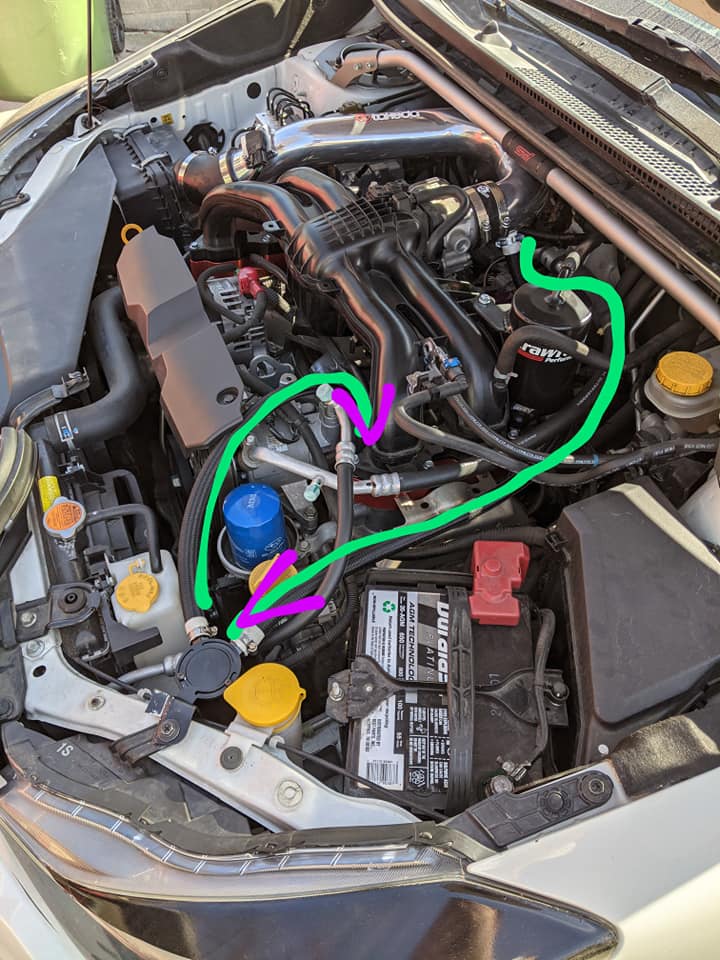
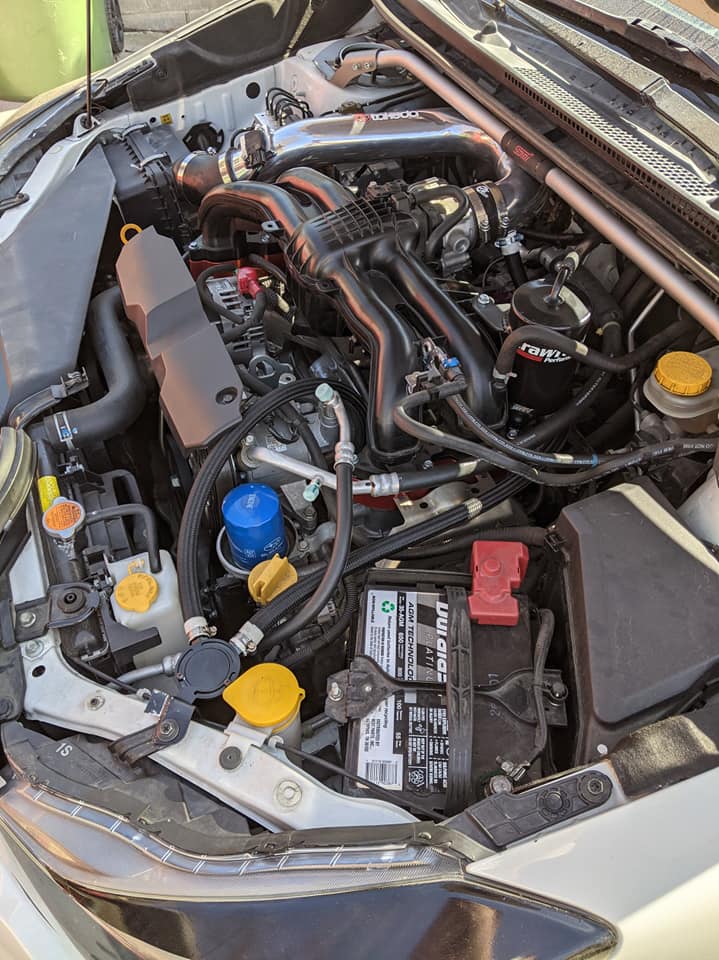
Modern combustion engines like the FB20 have two ventilation ports. One is the PCV, the other is the crank case breather valve. Most people are aware of the benefits of using a catch can (CC) or an air oil separator (AOS) for the positive crankcase ventilation (PCV) system.
You can install a CC or AOS to keep your intake cleaner. The filtered air reduces blow by oil vapors entering the intake manifold. For reliability, those with direct injection will benefit more than those with port injection in terms of carbon build up. For performance, the cleaner and cooler air entering the intake manifold via PCV will produce a cleaner burn. Thus producing more powa' baby. This is where most people stop.
Your engine breather valve is located on the driver side of the car (USDM), under the intake manifold attached to the block. It's function is exactly what it sounds like, a port to help your engine breathe. The air from the breather valve moves in two directions depending on engine load.

During idle and cruising (green lines) the engine block creates a vacuum pulling in air from a bung under the intake (stock or aftermarket).
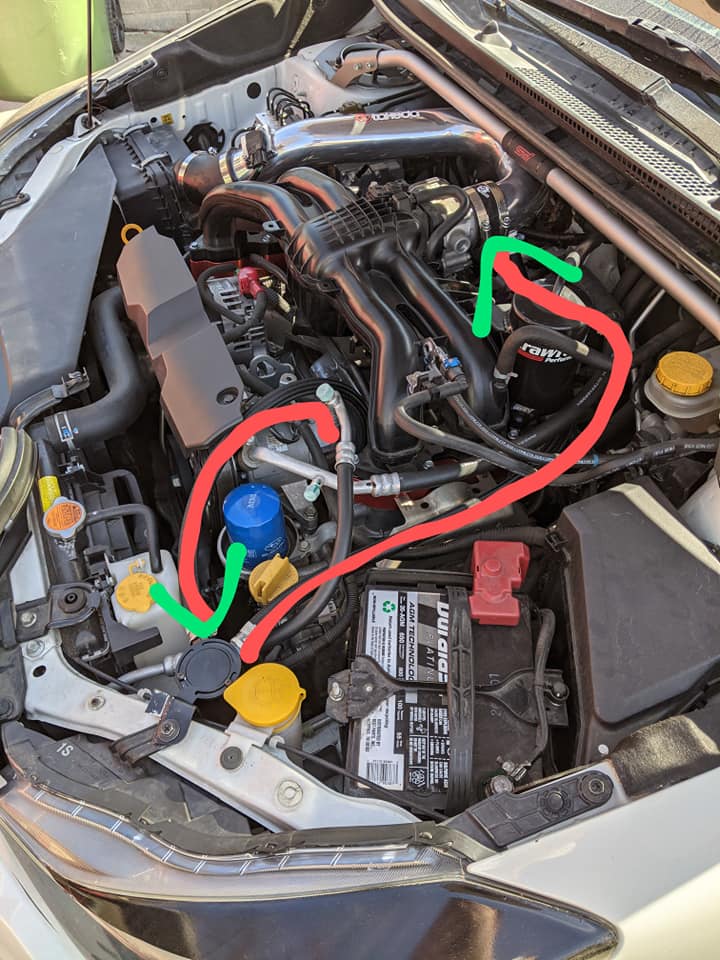
During high engine loads (red lines) the flow reverses and actually starts blowing air (and oil vapors from blow-by) out of the block back into the intake just before the throttle body.
I've added a CC to this breather system because I am now running an aftermarket Cold Air Intake. The OEM intake tubing has a built in reservoir/baffle box which helps pool excess air/vapor and returns it to the block during suction (idle, cruising).
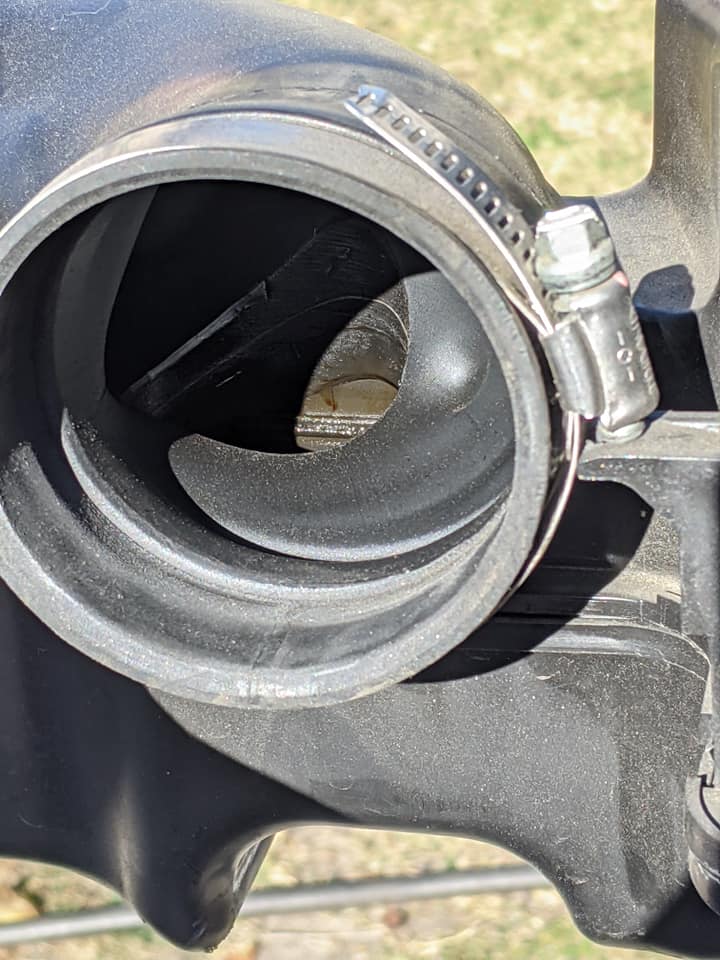
However in practice (100% engine loads and prolonged spirited driving) even that baffle box pours a bunch of oil vapor into the throttle body, and into the intake manifold.
The result can be a gummy throttle body (weird idle and unresponsive throttle) and also engine codes saying the engine is running too rich. The goal of this catch can on the breather side, is to keep reliability for WOT type driving.
Also as a side performance benefit, like the AOS on the PCV side, keeping the intake cleaner, (before the throttle body) reducing oil vapors going into the intake manifold before combustion.
Since the writing of the original article, I've rerouted the Catch Can. All the information above still holds true. However I would like to emphasize the importance of 2 key considerations when installing your own catch can on the CCV.
With these two things considered, you will have a clean, free flowing CCV return line that is filtered with a Catch Can.
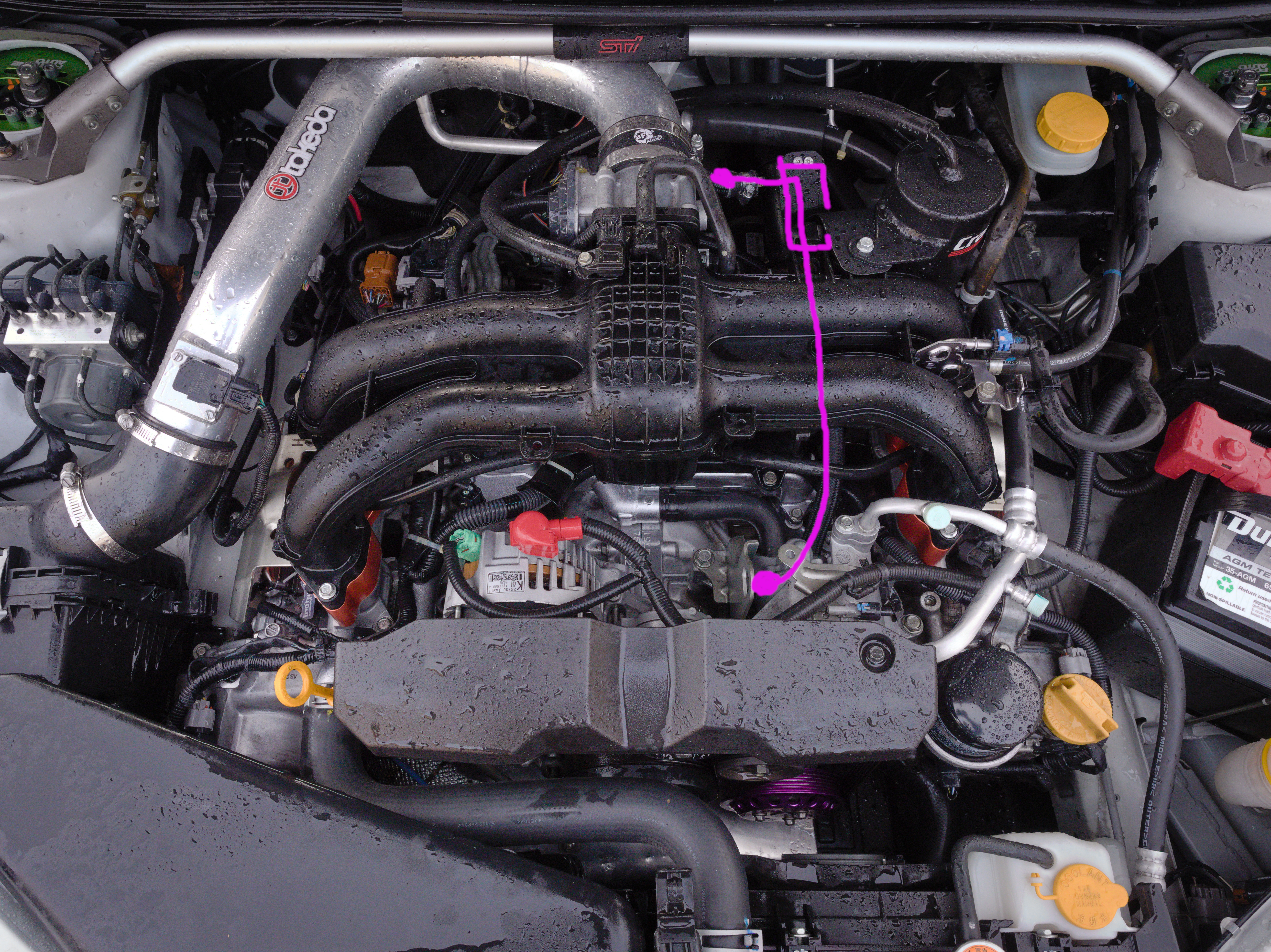
With both PCV and breather sides "filtering" oil vapors, there is the potential to produce a more efficient combustion, thus more performance at high engine loads and high RPMs.
While I am no expert, all this information comes from reading technical documentation found around the web and from direct experience. I hope this information will help others in their quest for economy car performance ✌️🌴